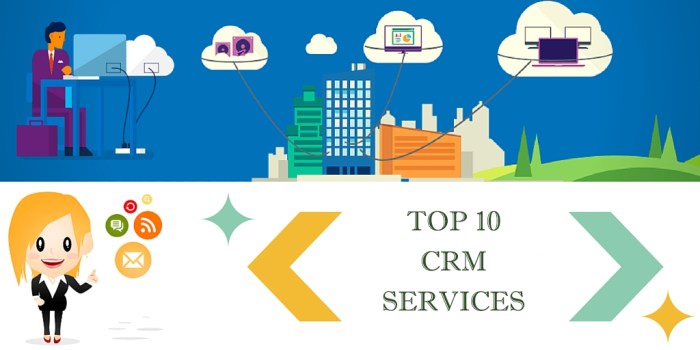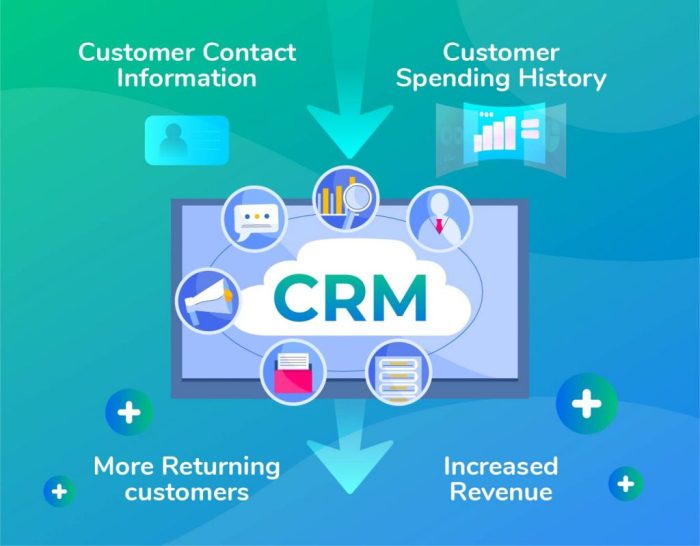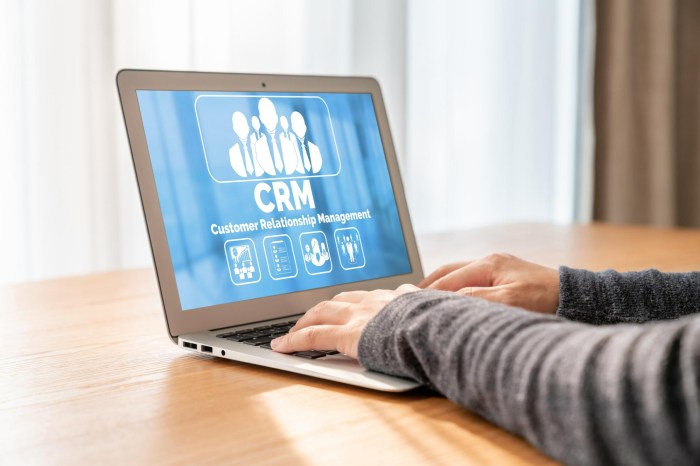Crm software and services – In today’s competitive business landscape, managing customer relationships effectively is paramount to success. Customer Relationship Management (CRM) software and services provide the tools and infrastructure to streamline this process, fostering stronger customer connections and driving business growth. This comprehensive guide delves into the intricacies of CRM, exploring its functionalities, benefits, various types, and crucial considerations for selection and implementation.

Source: tvisha.com
Understanding CRM Software and its Core Functionalities
At its core, CRM software is a centralized system designed to manage all aspects of customer interactions. This encompasses everything from initial contact to ongoing engagement and post-sales support. Key functionalities typically include:
Core CRM Features:, Crm software and services
- Contact Management: Storing and organizing detailed customer information, including contact details, communication history, and purchase records. This facilitates personalized interactions and targeted marketing.
- Sales Force Automation (SFA): Automating sales processes such as lead management, opportunity tracking, and sales forecasting. This enhances efficiency and improves sales team productivity.
- Marketing Automation: Automating marketing tasks like email campaigns, social media engagement, and targeted advertising. This allows for efficient outreach and personalized customer journeys.
- Customer Service and Support: Managing customer inquiries, resolving issues, and tracking support tickets. This improves customer satisfaction and loyalty.
- Reporting and Analytics: Generating insightful reports and dashboards to track key performance indicators (KPIs) and gain valuable insights into customer behavior and business performance. This data-driven approach allows for informed decision-making.
- Integration Capabilities: Seamlessly integrating with other business applications, such as email marketing platforms, e-commerce systems, and accounting software. This ensures data consistency and workflow efficiency.
Types of CRM Software and Services
CRM solutions are available in various forms, each catering to different business needs and scales:
1. On-Premise CRM
This traditional approach involves installing and managing the CRM software on your own servers. It offers greater control and customization but requires significant IT infrastructure and expertise.
2. Cloud-Based CRM (SaaS)
Software as a Service (SaaS) CRM is hosted on a vendor’s servers and accessed via the internet. It’s highly scalable, cost-effective, and requires minimal IT maintenance. Popular examples include Salesforce, HubSpot, and Zoho CRM.
3. Mobile CRM
Accessible via mobile devices, mobile CRM allows for real-time access to customer data and facilitates on-the-go management of customer interactions. This is particularly beneficial for sales teams and field service representatives.

Source: advocadoapp.com
4. Open Source CRM
Open-source CRM offers flexibility and customization, allowing businesses to tailor the software to their specific requirements. However, it often requires technical expertise for implementation and maintenance. SugarCRM is a prominent example.
Benefits of Implementing CRM Software
Investing in a CRM system offers numerous advantages, including:
- Improved Customer Relationships: Personalized interactions and proactive support foster stronger customer loyalty and satisfaction.
- Increased Sales Productivity: Automating sales processes and providing sales teams with valuable insights leads to improved efficiency and higher conversion rates.
- Enhanced Marketing Effectiveness: Targeted campaigns and personalized messaging improve marketing ROI and customer engagement.
- Better Customer Service: Faster response times, efficient issue resolution, and improved customer support contribute to higher customer satisfaction.
- Improved Data Management: Centralized data storage and access improve data accuracy and consistency, reducing errors and improving decision-making.
- Increased Revenue and Profitability: Improved customer relationships, increased sales productivity, and enhanced marketing effectiveness ultimately drive revenue growth and profitability.
Choosing the Right CRM Software: Key Considerations
Selecting the appropriate CRM system requires careful consideration of several factors:
- Business Size and Needs: The size of your business and its specific requirements will influence the type and features of the CRM system you need.
- Budget: CRM solutions vary widely in price, so it’s crucial to establish a realistic budget before starting your search.
- Integration Capabilities: Ensure the CRM integrates seamlessly with your existing business applications to avoid data silos and maintain workflow efficiency.
- Scalability: Choose a system that can grow with your business, accommodating future expansion and increased data volumes.
- User-Friendliness: The system should be intuitive and easy to use for all employees, minimizing training time and maximizing adoption.
- Vendor Support: Select a vendor with a strong reputation for reliable support and responsive customer service.
CRM Implementation and Best Practices
Successful CRM implementation requires careful planning and execution. Key steps include:

Source: capitaldistrictdigital.com
- Needs Assessment: Clearly define your business needs and objectives before selecting a CRM system.
- Data Migration: Transferring existing customer data to the new CRM system accurately and efficiently.
- User Training: Providing thorough training to all employees on how to use the CRM system effectively.
- Ongoing Monitoring and Optimization: Regularly monitor system performance and make adjustments as needed to optimize its effectiveness.
Frequently Asked Questions (FAQ)
- Q: What is the cost of CRM software? A: CRM software costs vary widely depending on the features, vendor, and deployment model. Prices can range from free open-source options to thousands of dollars per month for enterprise-level solutions.
- Q: How long does it take to implement CRM software? A: Implementation time depends on the complexity of the system, the size of your business, and the level of customization required. It can range from a few weeks to several months.
- Q: What are the key metrics to track with CRM? A: Key metrics include customer acquisition cost (CAC), customer lifetime value (CLTV), customer churn rate, sales conversion rates, and customer satisfaction (CSAT).
- Q: How can I choose the right CRM for my business? A: Consider your business size, budget, specific needs, integration requirements, scalability, user-friendliness, and vendor support when selecting a CRM system.
- Q: What are some examples of popular CRM software? A: Popular CRM platforms include Salesforce, HubSpot, Zoho CRM, Microsoft Dynamics 365, and SugarCRM.
Resources: Crm Software And Services
Call to Action
Ready to transform your customer relationships and drive business growth? Contact us today for a free consultation to explore how CRM software can benefit your organization.
Popular Questions
What is the difference between CRM software and CRM services?
CRM software is the actual application; CRM services encompass implementation, training, customization, and ongoing support.
How much does CRM software cost?
Costs vary widely based on features, user numbers, and provider. Expect a range from affordable monthly subscriptions to substantial enterprise-level contracts.
What are some key features to look for in CRM software?
Essential features include contact management, sales pipeline tracking, marketing automation, reporting and analytics, and customer support tools. Specific needs will dictate further feature requirements.
How long does it take to implement CRM software?
Implementation timelines vary depending on the complexity of the system and the size of the organization. It can range from a few weeks to several months.
What type of training is required for CRM software?
Most providers offer training resources, including online tutorials, webinars, and in-person workshops. The extent of training needed depends on user roles and system complexity.
